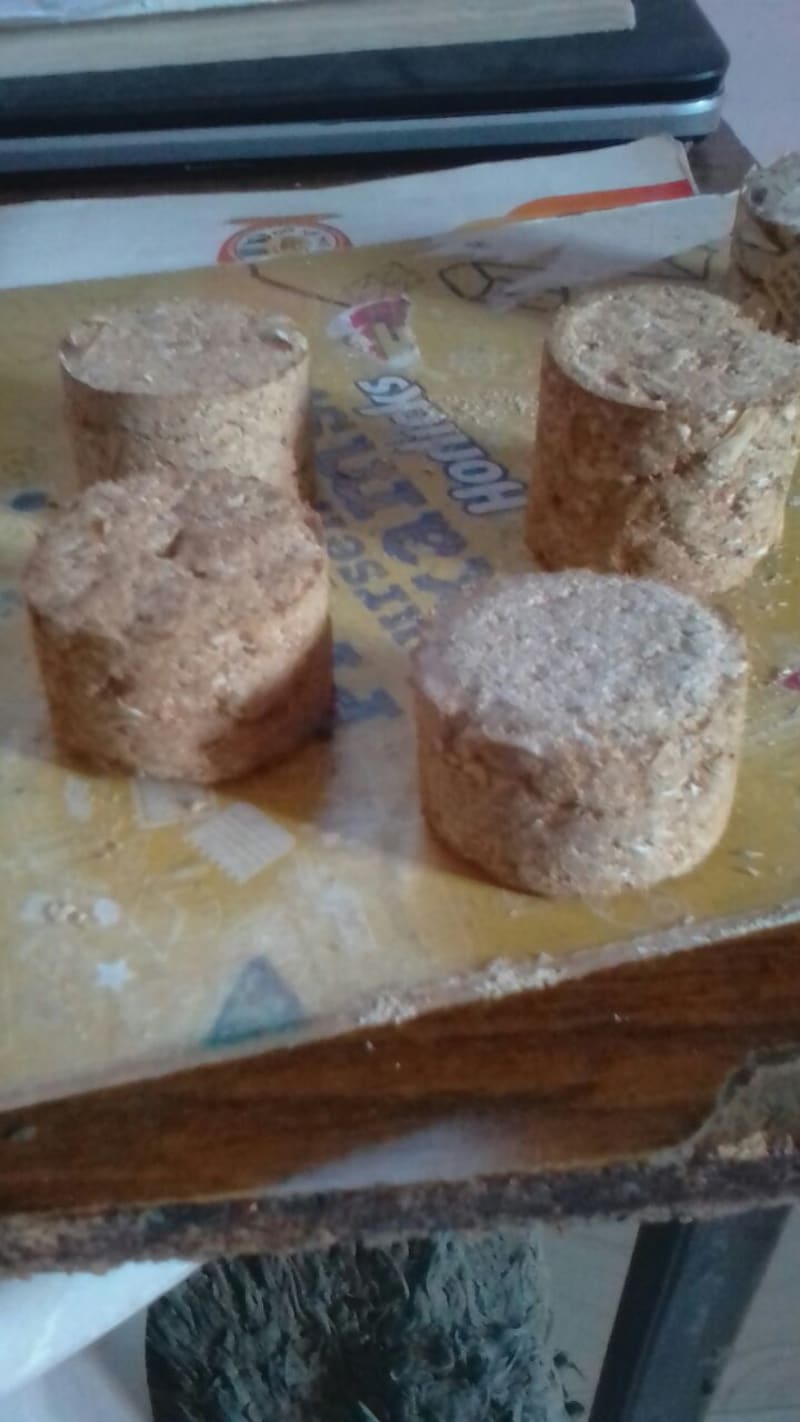Briquettes are a densified form of agricultural remains that have a certain calorific value and thermal usefulness once they have been compacted. Briquettes are slowly becoming popular as sources of fuel for boilers in semi-rural India. Not only for boilers, briquettes also serve as a great alternative for fuel-wood that is used by people living in rural India for cooking purposes. The most common raw material used for making briquettes is saw dust and biomass. These do not add carbon to the atmosphere and thus are a non-polluting source of energy. But there are numerous other materials like coffee husk, rice husk, paper pulp, sugarcane remains, etc. that are potentially great raw materials for briquettes with proper and adequate binders. With proper utilization of resources, briquettes can serve as a great source of energy as well as a secondary source of income for the farmers living in rural areas. These are abundantly available in an agricultural driven country like India.
The technology to convert this loose, slurry form of waste into a source of thermal energy is expensive and heavy. The most commonly used machines in industries are not only heavy, but they consume a great amount of electrical power and employ the screw press mechanism which adds to the cost. The objective is to reduce the cost and make the technology available to the farmers at a reasonable price. Hence the machine, as shown, employs a Scotch-Yoke mechanism and uses a piston press to compress the material. Piston presses are cheaper than screw presses and thus helped in the reduction of the cost greatly. The Scotch-Yoke mechanism employs a wheel on which a pin is mounted which pushes a vertical link horizontally which moves the piston in and out of the compression cylinder thereby creating the briquettes. There was no need of a heating element as the friction generated from the piston and cylinder generates enough heat to achieve proper densities. The required amount of pressure was achieved by increasing the input torque by keeping the operating handle and the wheel long enough for the purpose. The machine stands at a total weight of 30 kilograms which can be made portable by installing wheels.
During the testing, sawdust was chosen as the raw material and paper pulp along with starch water were added as the binder. The briquettes that were formed were having a diameter of 80 mm and a length of 50 mm. The mass of each briquette was measured at 182 grams giving a density of 723.43 kg/m^3. This density is approximately 97% of the density of the briquettes used in industries. A time of almost 15 seconds was required to create 1 briquette.
The machine can be improved in several ways. The second side of the Scotch-Yoke can be used which would double the productivity. A small nozzle can be provided at the end of the compression to further increase the density.
Any other suggestions and comments are welcome. Thank you.
Like this entry?
-
About the Entrant
- Name:Harjot Singh Saluja
- Type of entry:individual
- Software used for this entry:PTC Creo 3.0
- Patent status:pending





